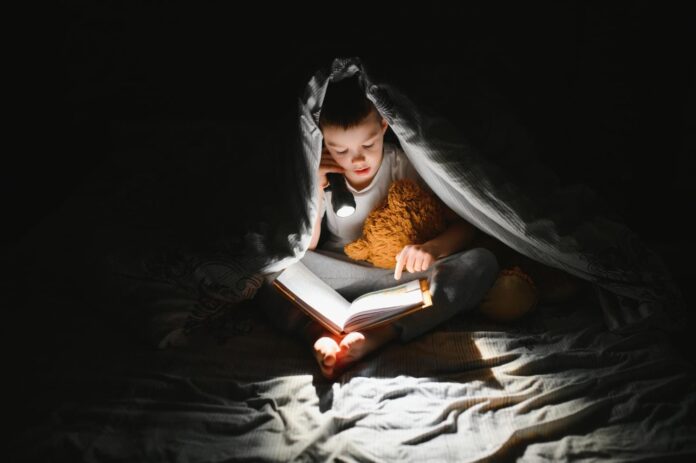A recent study conducted by researchers from the University of Basel and the Technical University of Munich suggests that the colour of light may not significantly impact the human internal clock or sleep. The study was published in the scientific journal “Nature Human Behaviour.”
The research team aimed to investigate the effects of different light colours on the internal clock and sleep. The researchers exposed 16 healthy volunteers to a blueish or yellowish light stimulus for one hour in the late evening and a white light stimulus as a control condition.
The light stimuli were designed to differentially activate the colour-sensitive cones in the retina in a very controlled manner. However, the stimulation of the light-sensitive ganglion cells was the same in all three conditions. Differences in the effect of the light were, therefore, directly attributable to the respective stimulation of the cones and, ultimately, the colour of the light.
The researchers then assessed how long it took the volunteers to fall asleep and how deep their sleep was at the beginning of the night. They also tested their ability to react, which decreases with increasing sleepiness.
The conclusion: “We found no evidence that the variation of light colour along a blue-yellow dimension plays a relevant role for the human internal clock or sleep,” says Christine Blume, the first author of the study. “Rather, our results support the findings of many other studies that the light-sensitive ganglion cells are most important for the human internal clock.”
Manuel Spitschan, one of the researchers involved in the study, sees the findings as an important step toward putting basic research into practice. “Our findings show that it is probably most important to take into account the effect of light on the light-sensitive ganglion cells when planning and designing lighting. The cones and therefore the colour play a very subordinate role.”
Further studies are needed to determine whether the colour of the light has no effect on sleep if the parameters change and the duration of the light exposure is extended or takes place at a different time.
Journal Reference
- Blume, C., Cajochen, C., Schöllhorn, I., Slawik, H. C., & Spitschan, M. (2023). Effects of calibrated blue–yellow changes in light on the human circadian clock. Nature Human Behaviour, 1-16. DOI: 10.1038/s41562-023-01791-7
